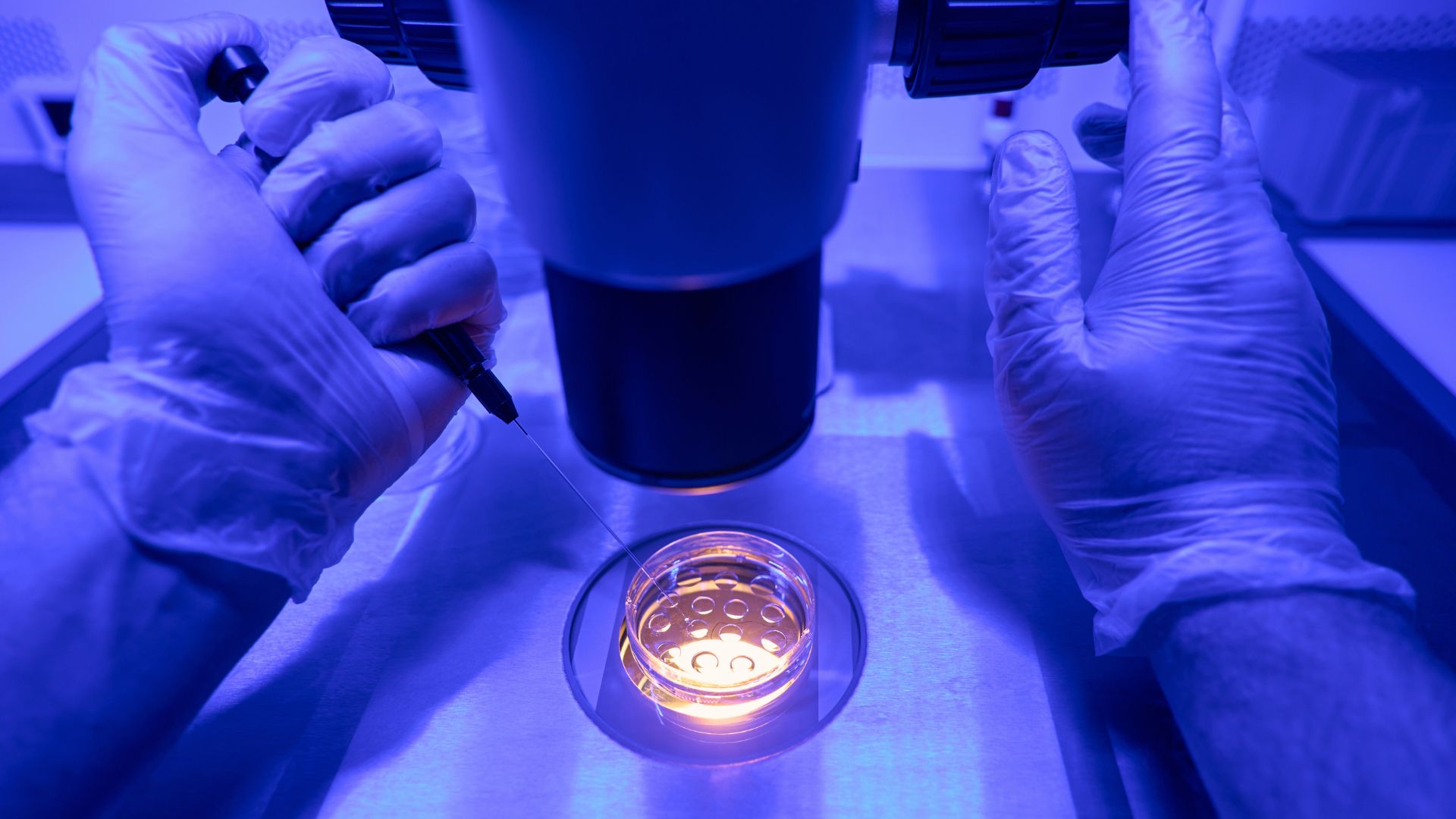
Are you considering Frozen Embryo Transfer (FET) as part of your fertility journey in India? You likely have questions such as:
- How successful is FET compared to fresh embryo transfer?
- What is the process of FET like?
- How much does FET cost in India?
- Does age affect FET success rates?
In this in-depth guide, we’ll address these common concerns and provide a comprehensive overview of FET in the Indian context, equipping you with the knowledge to make informed decisions on your path to parenthood.
Key Takeaways
| Insight | Explanation |
|---|---|
| Improved pregnancy rates | FET can lead to similar or better pregnancy rates vs fresh transfer, especially for women over 35 |
| Reduced OHSS risk | FET eliminates ovarian stimulation, greatly reducing risk of Ovarian Hyperstimulation Syndrome |
| Cost-effective option | FET is significantly less expensive than a full IVF cycle by avoiding certain procedures |
| Emotional support is crucial | The FET journey can be emotionally demanding; counseling and support groups can help |
| Regulations limit embryo storage | Indian laws typically allow embryo storage for 5-10 years; discuss renewal options with your clinic |
The Rise of FET in India
Frozen Embryo Transfer has seen a significant rise in popularity among Indian couples and individuals seeking fertility treatment.
This growth can be attributed to several factors:
- High success rates that often match or exceed those of fresh embryo transfers
- Elimination of the risk of Ovarian Hyperstimulation Syndrome (OHSS)
- Potential for a more receptive uterine environment
- Cost-effectiveness compared to a complete IVF cycle
- Flexibility in timing and the possibility of multiple attempts
As more people recognize these advantages, FET is becoming an increasingly viable option for aspiring parents in India.
Benefits of FET: A Closer Look
Improved Pregnancy Rates
One of the most compelling benefits of FET is the potential for improved pregnancy rates, particularly for women over the age of 35.
Data from the Indian Society for Assisted Reproduction (ISAR) suggests that FET can lead to similar or even better pregnancy rates compared to fresh embryo transfer in this age group.
This advantage may be attributed to two key factors:
- A more controlled hormonal environment
- A potentially more receptive uterine lining
Additionally, studies have shown that frozen embryos can have better post-thaw survival rates and implantation potential compared to fresh embryos.
This might be due to a process called “selection bias,” where only the strongest embryos survive the freezing and thawing process.
Actionable Step: During your initial consultation with an Indian fertility specialist, discuss your age and inquire about success rates specifically for FET cycles in their clinic.
Reduced Risk of OHSS
Ovarian Hyperstimulation Syndrome (OHSS) is a potential complication of IVF cycles where the ovaries become overstimulated by fertility medications.
Symptoms can range from mild bloating to severe abdominal pain and fluid buildup.
FET offers a significant advantage by eliminating the need for ovarian stimulation medications, greatly reducing the risk of OHSS.
This is particularly beneficial for women with conditions like polycystic ovary syndrome (PCOS) who are at a higher risk of developing OHSS.
Enhanced Uterine Receptivity
The lining of the uterus, known as the endometrium, plays a crucial role in successful embryo implantation. FET allows for two potential approaches to optimize endometrial receptivity:
- Natural Cycle FET: This method utilizes a woman’s natural menstrual cycle for ovulation and endometrial lining development. Regular hormonal monitoring is essential to determine the optimal timing for embryo transfer.
- Medicated Cycle FET: In this approach, medications like estrogen and progesterone are used to create a controlled hormonal environment and prepare the endometrium for implantation. This offers more control over the timing of the transfer.
Your fertility specialist can recommend the most suitable approach based on your individual circumstances.
Cost-Effectiveness
Compared to a complete IVF cycle, FET is a significantly less expensive option. It eliminates the costs associated with:
- Ovarian stimulation medications
- Egg retrieval procedure
- Fertilization procedures (if embryos are already available from a previous IVF cycle)
Actionable Step: Request a cost breakdown for both FET and a full IVF cycle from fertility clinics you’re considering to compare costs and make an informed decision.
Preimplantation Genetic Testing (PGT)
FET provides an opportunity to integrate Preimplantation Genetic Testing (PGT) for couples with a family history of genetic disorders or those seeking to improve their chances of a healthy pregnancy.
PGT involves testing embryos for chromosomal abnormalities (PGT-A) or specific genetic conditions (PGT-M) before transfer.
Actionable Step: Discuss your interest in PGT with your fertility specialist. They can advise you on the types of PGT available, their suitability for your situation, and the associated costs.
The FET Process: Step by Step
Step 1: Endometrial Preparation
The first stage of FET focuses on creating a healthy and receptive uterine lining for optimal embryo implantation. This can be achieved through either a natural cycle or a medicated cycle approach, as discussed earlier.
Step 2: Embryo Thawing and Assessment
Frozen embryos are stored in liquid nitrogen at extremely low temperatures. Before transfer, the embryos undergo a thawing process in a specialized laboratory environment.
Skilled embryologists assess the viability and quality of the thawed embryos using advanced techniques like microscopic evaluation. Only healthy embryos with good development potential are selected for transfer.
Step 3: Embryo Transfer Procedure
The embryo transfer is a minimally invasive outpatient procedure typically performed by a gynecologist or fertility specialist. Here’s a simplified breakdown of the steps:
- A thin, flexible catheter is inserted through the cervix and carefully guided into the uterine cavity using ultrasound for visualization.
- The selected embryo(s) are loaded into the catheter and gently deposited into the optimal location within the uterus.
- After a brief rest period, you can usually recover at home.
Step 4: Post-Transfer Care and Monitoring
Following the transfer, progesterone medication might be prescribed to support the endometrium and early pregnancy development.
Regular blood tests may be scheduled to monitor hormone levels. A pregnancy test is typically performed around 10-12 days after the transfer.
Actionable Step: Discuss any post-transfer medications, monitoring protocols, and expected timelines with your fertility specialist.
Considerations for FET
While FET offers a promising path to parenthood, it’s essential to understand the influencing factors and considerations before embarking on this journey.
Success Rates and Influencing Factors
FET success rates in India can vary depending on several factors:
- Age: Generally, younger women tend to have higher success rates with FET compared to older women. However, FET can still offer advantages for women over 35.
- Embryo Quality: The quality of the frozen embryos plays a significant role in determining success. Factors like embryo development stage, cell number, and overall morphology are considered during embryo selection.
- Clinic Experience: Choose a fertility clinic with a proven track record and experienced embryologists skilled in embryo thawing and transfer procedures.
Actionable Step: Request data on FET success rates from shortlisted fertility clinics. Inquire about their experience and success rates specifically for patients in your age group.
Cost of FET Cycles
While FET is generally less expensive than a full IVF cycle in India, there are still associated costs to consider:
- Medication costs for endometrial preparation and post-transfer support
- Lab fees for embryo thawing, assessment, and transfer procedures
- Professional fees for doctor consultations, lab technician charges, etc.
Actionable Step: Obtain a detailed cost breakdown for FET cycles from fertility clinics you’re considering to plan your finances effectively.
Emotional Aspects
The journey of FET can be emotionally demanding. There might be feelings of hope, anxiety, and uncertainty throughout the process.
Consider seeking professional counseling to navigate the emotional complexities of fertility treatment.
Online or in-person support groups can also connect you with others undergoing similar experiences, fostering a sense of community and understanding.
Actionable Step: Discuss your emotional well-being with your fertility specialist. They can recommend resources or support groups tailored to your needs.
Availability of Frozen Embryos
Indian regulations regarding embryo storage typically limit the duration to 5-10 years. If you plan on delaying pregnancy after embryo freezing, discuss renewal options or alternative storage arrangements with your clinic.
In case additional IVF cycles are needed to create more embryos for future FET attempts, factor in the associated costs and time commitment.
Legal and Ethical Implications
Surrogacy laws in India are complex and subject to change. If you’re considering surrogacy with FET, consult a legal professional to understand the current regulations and implications.
Embryo donation is another ethical consideration. Discuss the legalities and processes involved with your fertility specialist if this is an option you’re exploring.
Actionable Step: Research current Indian regulations regarding surrogacy and embryo donation. If considering either option, seek legal advice before proceeding.
Top FET Locations in India
If you’re considering Frozen Embryo Transfer in India, here are some of the top locations offering FET services:
- IVF Centers in Gurgaon
- IVF Centers in Noida
- IVF Centers in Ghaziabad
- IVF Centers in Thane
- IVF Centers in Navi Mumbai
- IVF Centers in Kalyan-Dombivali
- IVF Centers in Vasai-Virar
- IVF Centers in Mira-Bhayandar
- IVF Centers in Bhiwandi
- IVF Centers in Ulhasnagar
These locations offer state-of-the-art facilities, experienced fertility specialists, and comprehensive FET services to help you achieve your dream of parenthood.
Conclusion
Frozen Embryo Transfer has emerged as a compelling and successful approach to achieving parenthood in India.
It offers numerous benefits, including improved pregnancy rates, reduced OHSS risk, and cost-effectiveness compared to a full IVF cycle.
As you consider FET, remember that it is a personalized approach to fertility treatment. By understanding the process, considerations, and available resources, you can make informed decisions and embark on a hopeful path towards parenthood.
We encourage you to share your thoughts, experiences, and questions about FET in the comments below. Your insights can help support and inspire others on their fertility journeys.
Additional Resources:
This article is intended for informational purposes only and should not be considered medical advice. Always consult with a qualified healthcare professional regarding your specific situation.






